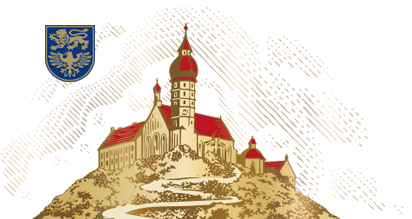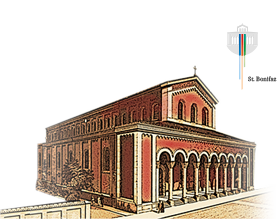Holy Chapel
The most important among the side chapels is the Holy Chapel in the northern upper storey of the Pilgrimage Church where the Andechs relics are kept.
The Holy Chapel was dedicated in 1472 and has a late Gothic reticulated vault. Thanks to the iron-clad entrance door, it remained unscathed by the disastrous fire of 1669. The door is secured by three crossbars, each with a lock. An artistic wrought iron grille was added to the chapel in 1672.
The rococo shrine altar from 1757 forms the room’s centrepiece. The relic monstrance, made in southern Germany around 1432/33, is stored in its centre. It encloses the heart of the Andechs relics, the three Sacred Hosts. Two of the hosts are said to originate from Pope Gregory the Great and depict the cross and a phalanx in the colour of blood. The third host with the monogram of Jesus in blood is said to go back to Pope Leo IX. Other well-known components of the collection of relics are a branch of the Crown of Thorns and a fragment of Christ’s reed sceptre.










